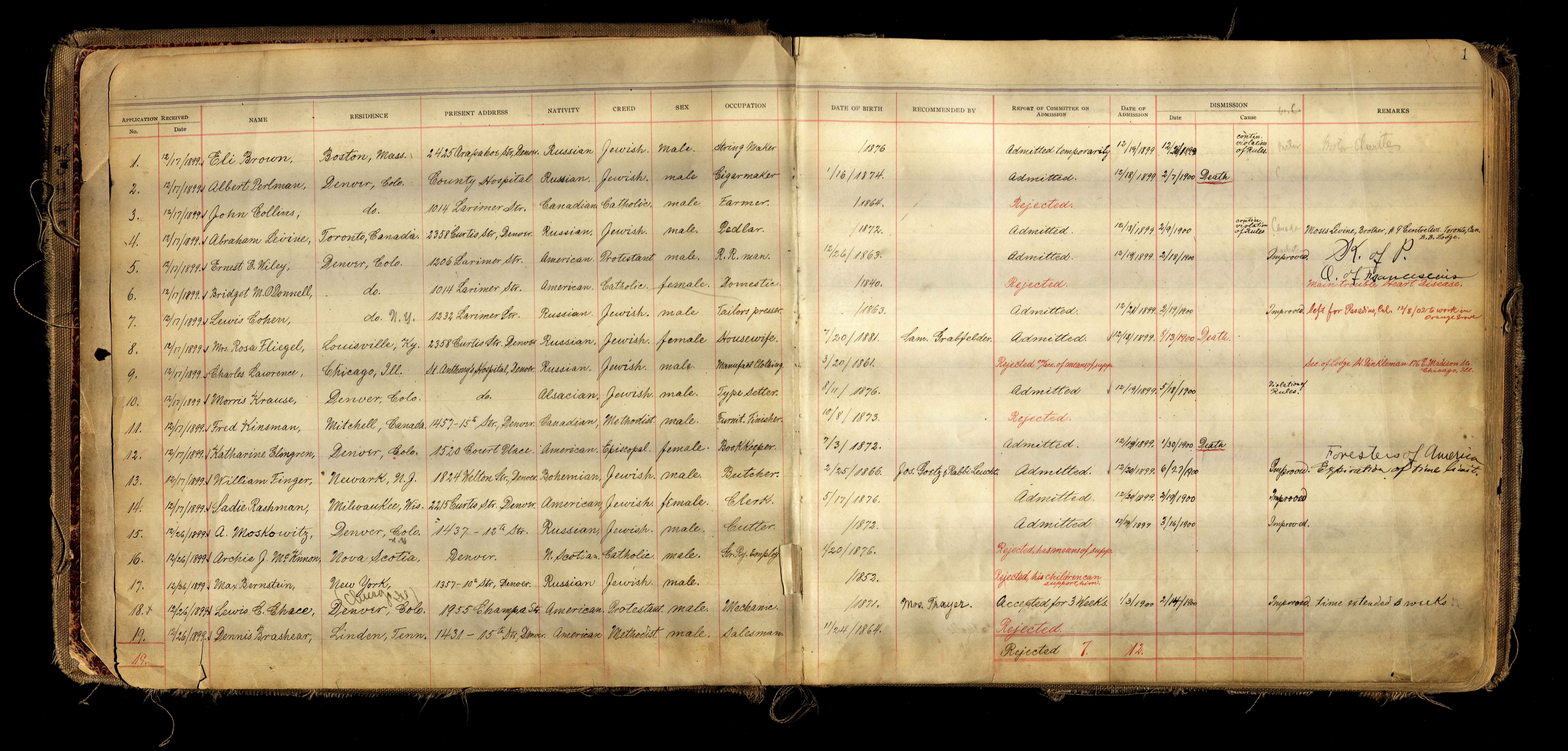
This ledger details the first patients admitted to National Jewish Hospital starting in 1899, giving particulars about each person who applied for admission—including country of origin, address, religion, age, sex, and profession. It provides a comprehensive snapshot of a Colorado tuberculosis patient population while highlighting the birth of one of Denver’s oldest hospitals and the seeds of philanthropy, science, and medicine.
In the late 1880’s, Colorado’s dry air and sunshine were lauded as a miracle cure for those suffering from tuberculosis, which was spreading widely across the country. People flocked to the state in droves in hopes of finding relief. While there were private sanatoriums and medical facilities to help those who could afford it, the state was also full of people who weren’t able to pay. In the midst of these conditions, National Jewish Hospital was founded as a nonsectarian hospital whose goal was to only admit those who were unable to otherwise afford to treat their disease. This admissions ledger shows the hospital’s first patients, along with an array of details about them. These details serve to elucidate the makeup of the immigrant population currently living in Denver: many originated from Russia and Germany, though Ireland and Norway were also represented in the first patients. Though the hospital was nonsectarian, the ledger shows a great many of the patients were European Jewish immigrants. The survey of professions offers interesting insight into what types of jobs were prevalent; a string maker and wine manufacturer show up among the clerks and tailors. This ledger is a remarkable slice of life in Colorado only 23 years into becoming a state, showcasing the people who had settled here and representing the seeds of philanthropy, science, and medicine that have become pivotal parts of the story of the state.
This admissions ledger details the first patients admitted to National Jewish Hospital starting in 1899. The handwritten account provides particulars about each of the people who applied for admission, including their country of origin, current address, religion, age, sex, and profession. It not only provides a comprehensive demographic snapshot of a Colorado tuberculosis patient population, it also highlights the birth of one of Denver’s oldest hospitals. It was the original policy of National Jewish Hospital to only admit people in the early stages of the disease and for a limit of 6 months in order to try to help those who had the best chance of recovery. However, the ledger shows that many of the initial stays were extended and that several of the first patients died shortly after admission, perhaps showing the dire state of those suffering and the hospital’s leniency when faced with offering a final chance at treatment. The goal of the hospital to only help those who were otherwise unable to receive it is also reflected in the documentation of those potential patients who were rejected due to having other means of support.
National Jewish Health
1400 Jackson St.
Denver, CO 80206
United States
